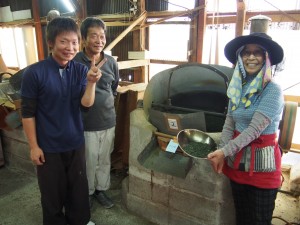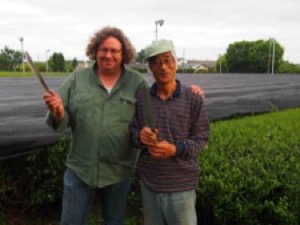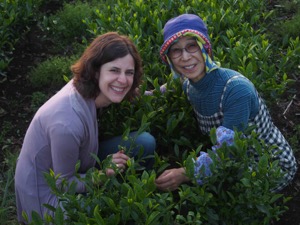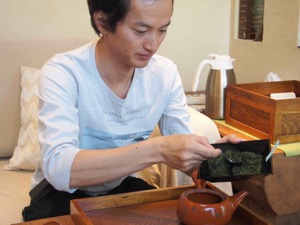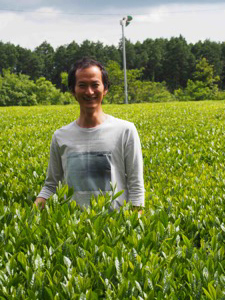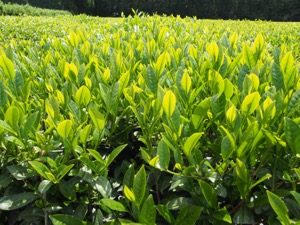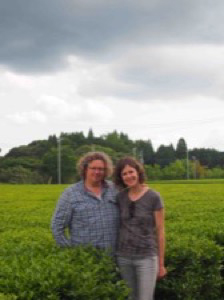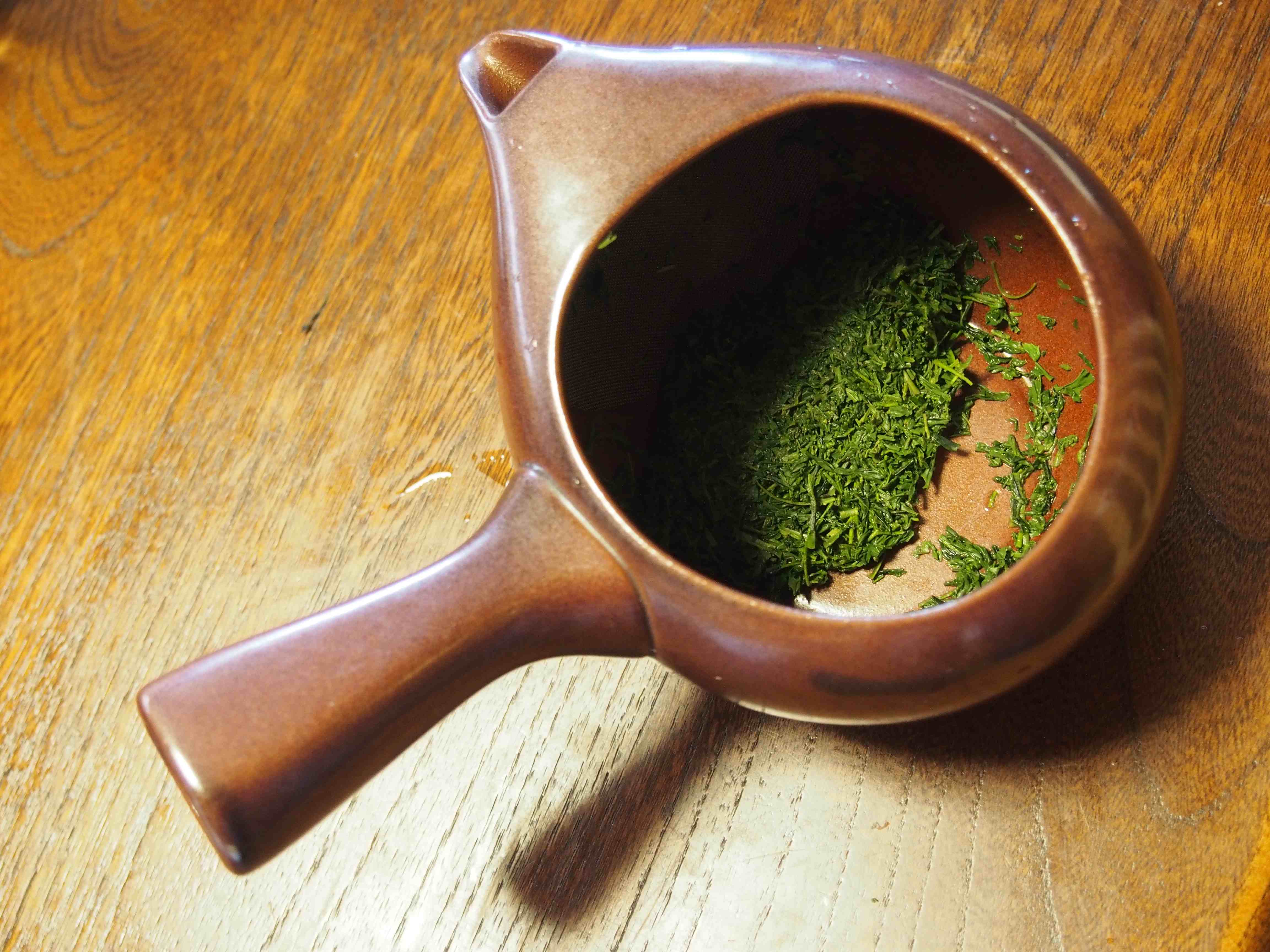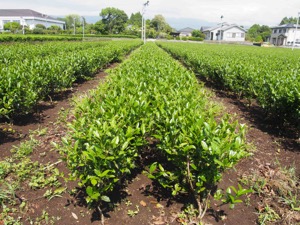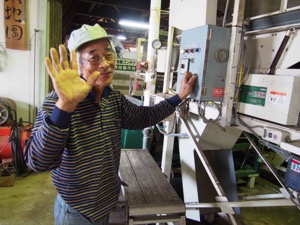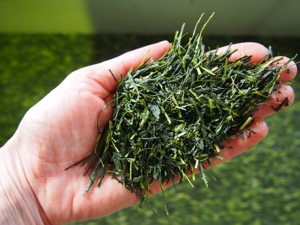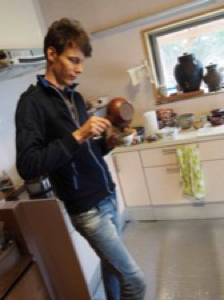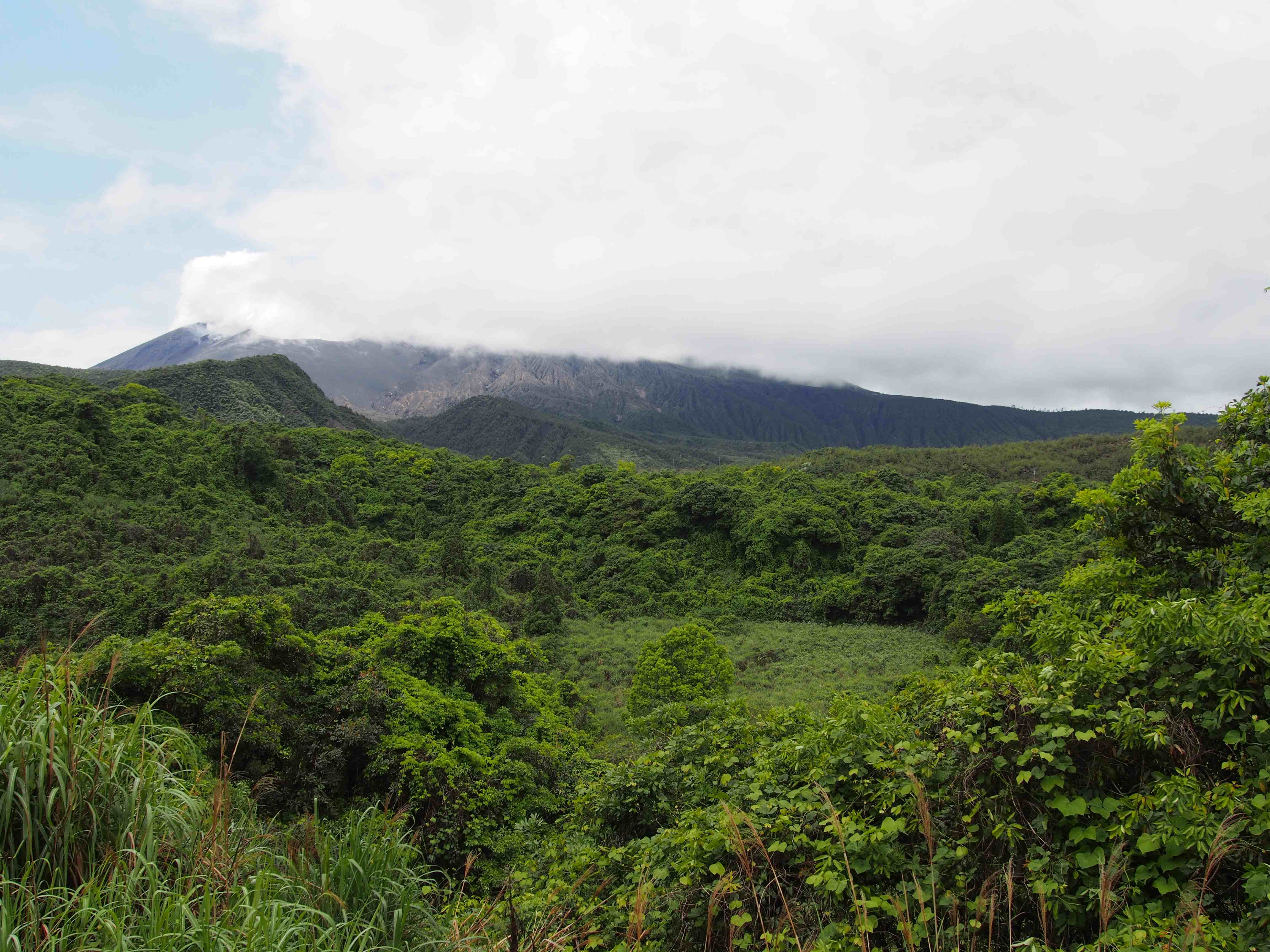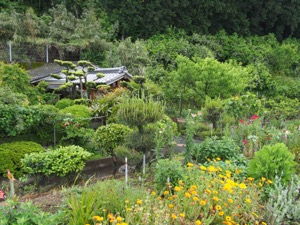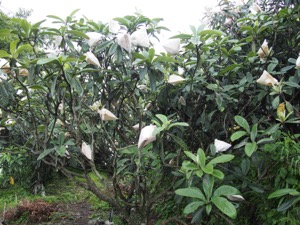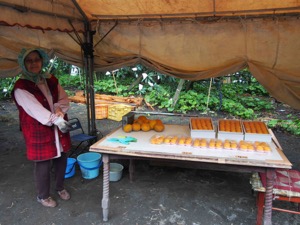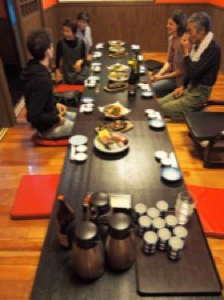
Kamairicha is a japanese tea whose leaves are heated dry and not steamed. The name refers to ” Kama “, which is an iron pan. So Kamairicha means ” the tea of the pan”. Nowadays, it is very rare to prepare the Kamairicha by hand in the pan. Sometimes it is done, but only for teaching purposes or championships. Over time machines were used in the production process but even that is rare nowadays. The amount of Kamairicha is only 1 % of the total Japanese green tea production.
In 2015, on our trip to Japan, we visited Haruyo and Shigeru Morimoto. To learn more about the production of tea, they suggested to visit a neighbour, who produces green tea without vaporization (Kamairicha), as it was done before. With great curiosity we went together to visit his small tea plantation. We were surprised to see how it is possible to produce such delicate and unique green tea with simple means and without vaporization. Enthusiastic, we bought a small amount to share this experience with our tea friends back in Portugal. Right now, we only have a limited amount of 90 packs of 100g but we hope to continue this cooperation in the future.
Later we did meet another producer of very good quality Kamairicha and decided to include his tea also on our list to be able to show the differenced in Japanese not steemed teas.
 Português
Português English
English Español
Español
